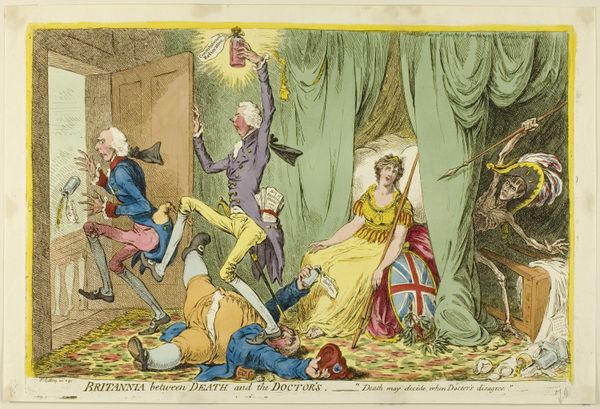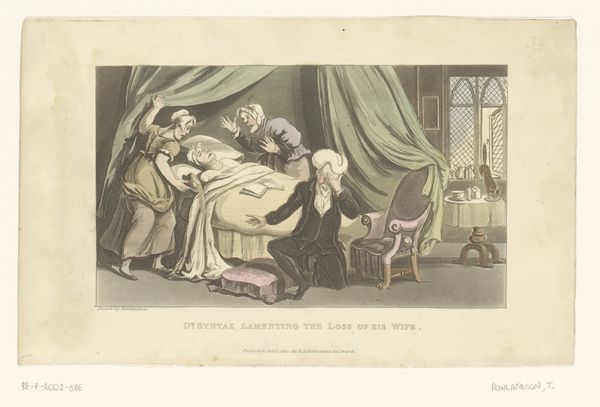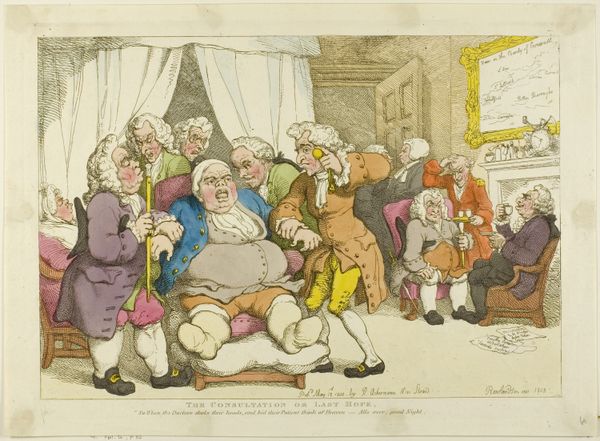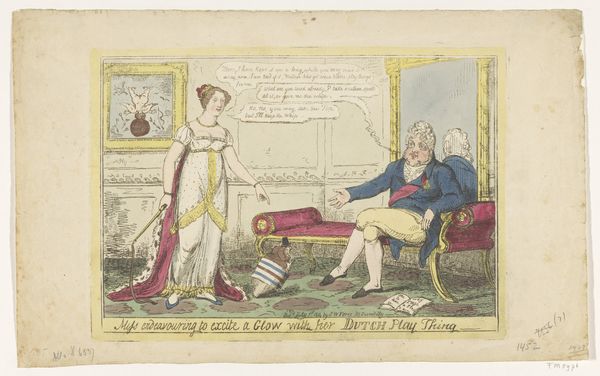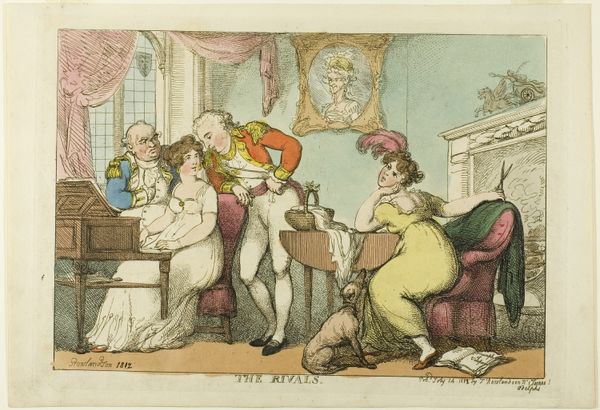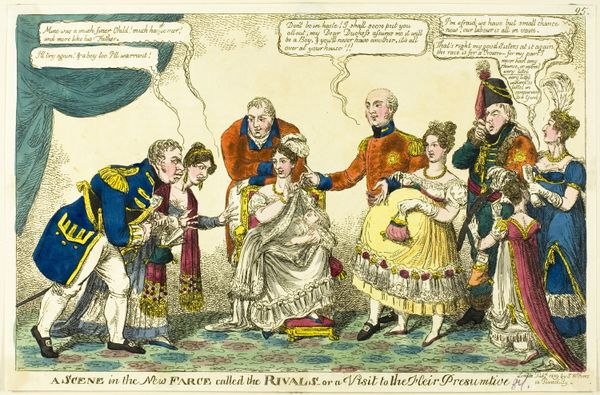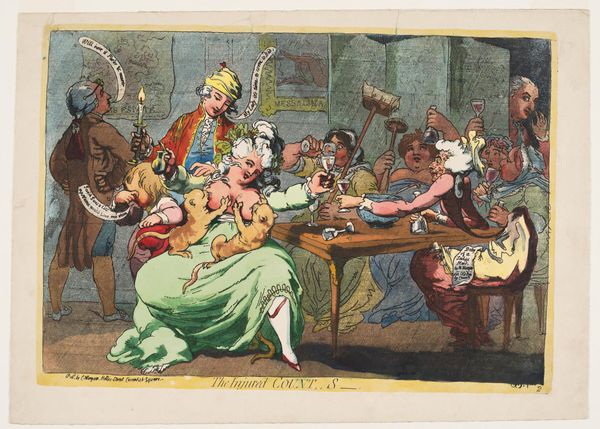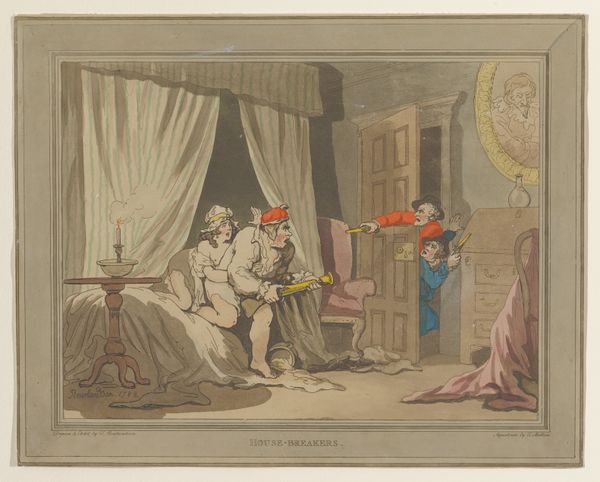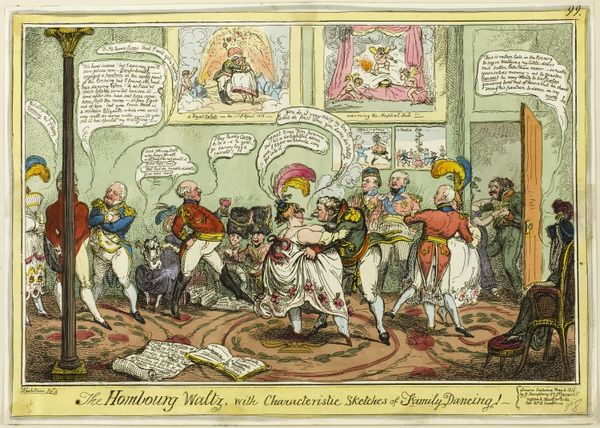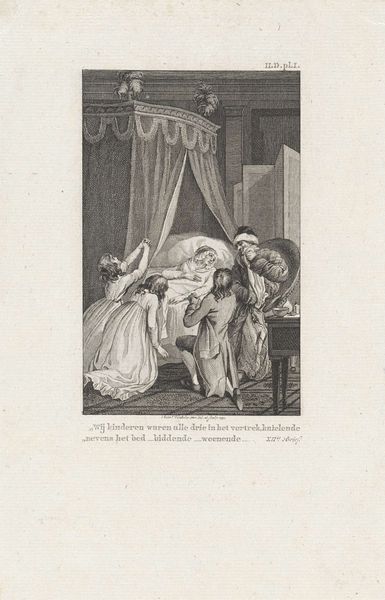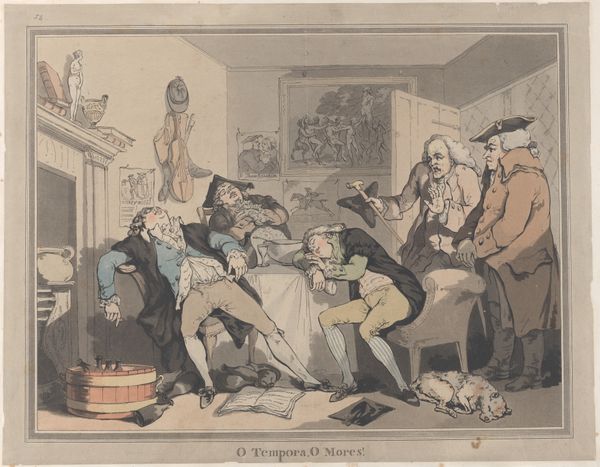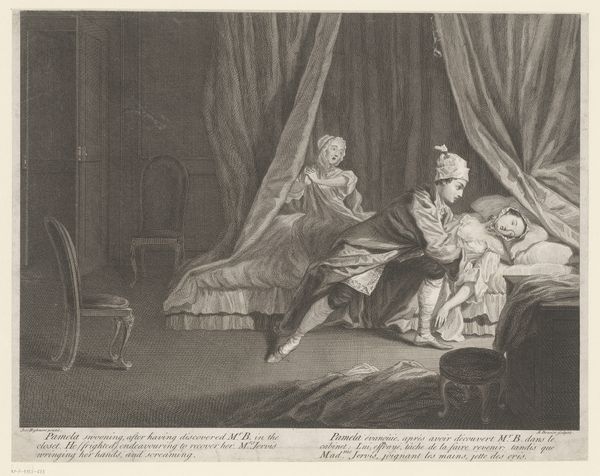
drawing, print, etching, paper, pencil
#
drawing
#
narrative-art
# print
#
etching
#
caricature
#
paper
#
romanticism
#
pencil
#
genre-painting
#
history-painting
Dimensions: 229 × 340 mm (image);257 × 360 mm (plate); 267 × 374 mm (sheet)
Copyright: Public Domain
Editor: Here we have "An Accouchment," a satirical etching by Charles Williams, dating around 1812. The scene is… chaotic! It feels like a commentary on the political climate, using childbirth as a metaphor. What jumps out at you? Curator: The print’s materiality immediately suggests a wide distribution. The etching process, the paper used - likely a readily available, affordable kind - points to a desire for broad consumption. Knowing this was made during a tumultuous time, I’d ask: how does this mass-producible image become a tool for political discourse? What’s the relationship between the relatively simple production method and the complex social commentary? Editor: I hadn’t thought about the material pointing to broader distribution. So, beyond just the imagery, the fact that it’s a print impacts its meaning? Curator: Absolutely. Consider the labour involved. Etching, unlike painting, allows for replication. Who were the consumers? Were they mainly wealthy landowners, or were copies circulated amongst the working classes in London's print shops? This matters because it determines who’s engaging with the critique of the “present Administration.” The cheapness also democratizes art, challenging the exclusivity often linked to it. Editor: That’s fascinating. The etching allowed for social commentary to spread rapidly among different classes, critiquing administration at every turn, even outside established salons or galleries. Curator: Precisely. We see how this "low art," this caricature in print form, can challenge established political structures. Even its survival to the present implicates us; the marketplace for this kind of critique continues to exist and thrive, and may change depending on availability. Editor: It really reframes how I think about the value of the work – not just in its aesthetic qualities, but also in its function within its society and our own. Curator: Indeed. The material properties are just as crucial to understanding its political power and cultural effect as the identifiable figures it portrays.
Comments
No comments
Be the first to comment and join the conversation on the ultimate creative platform.
